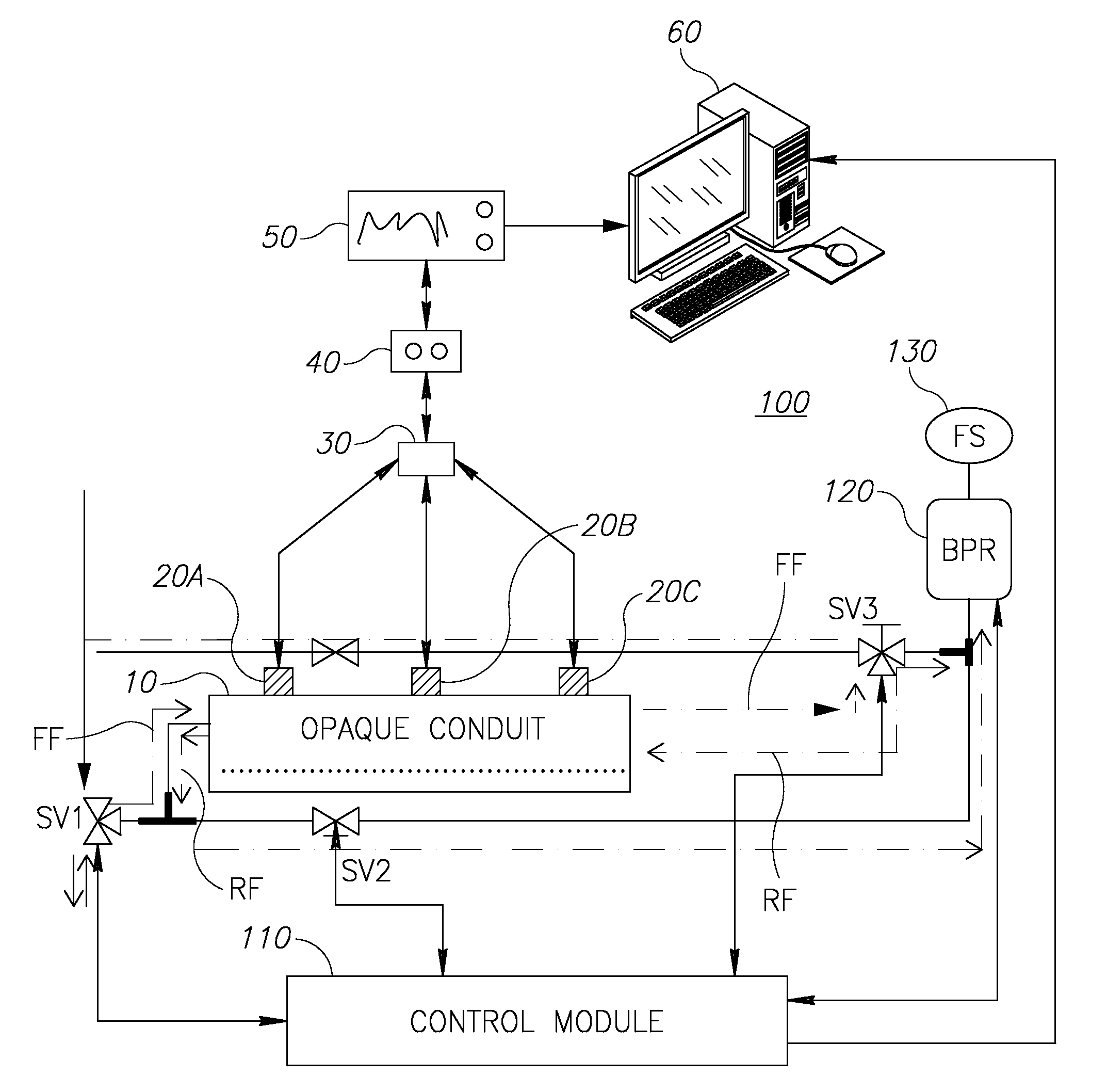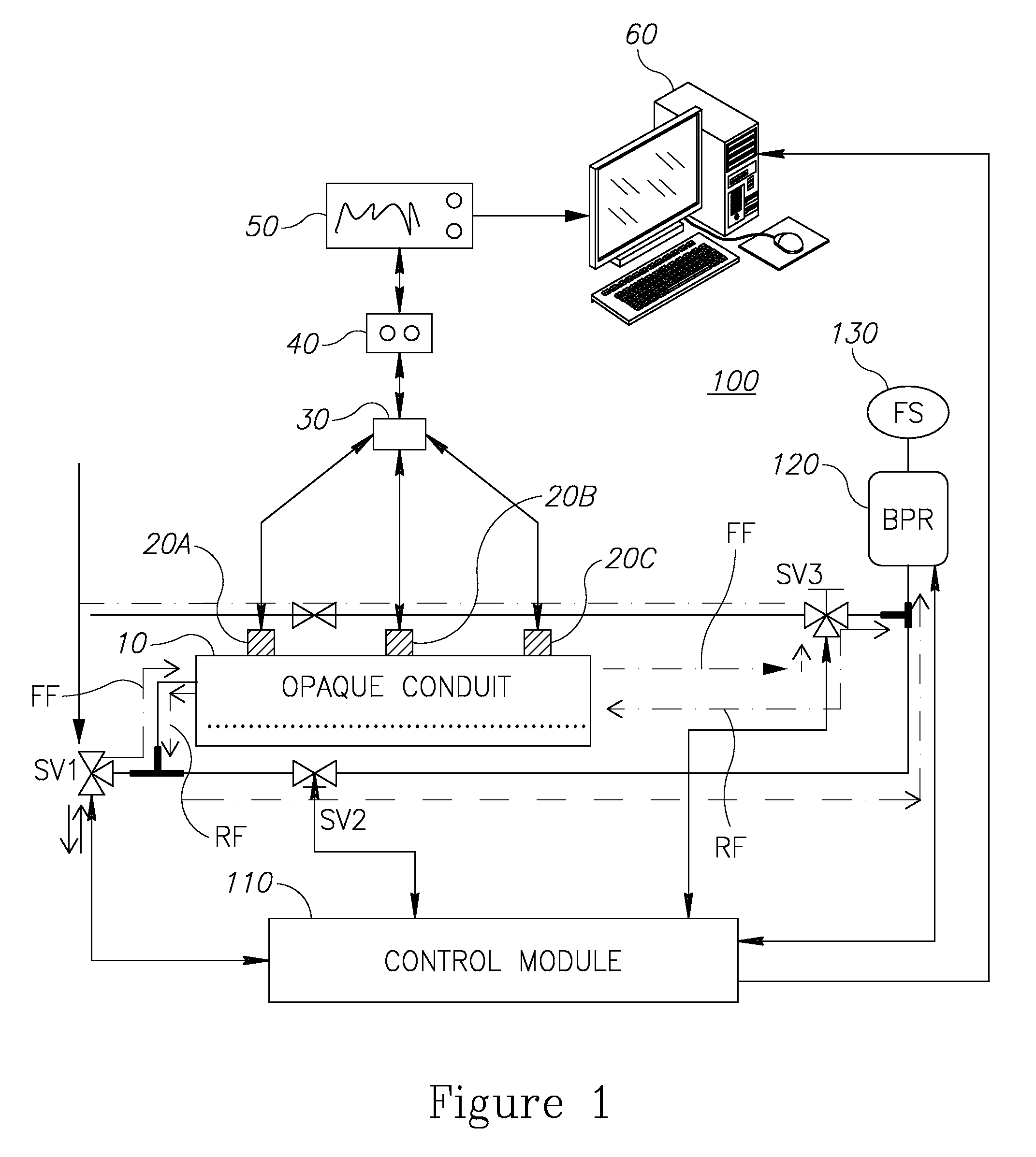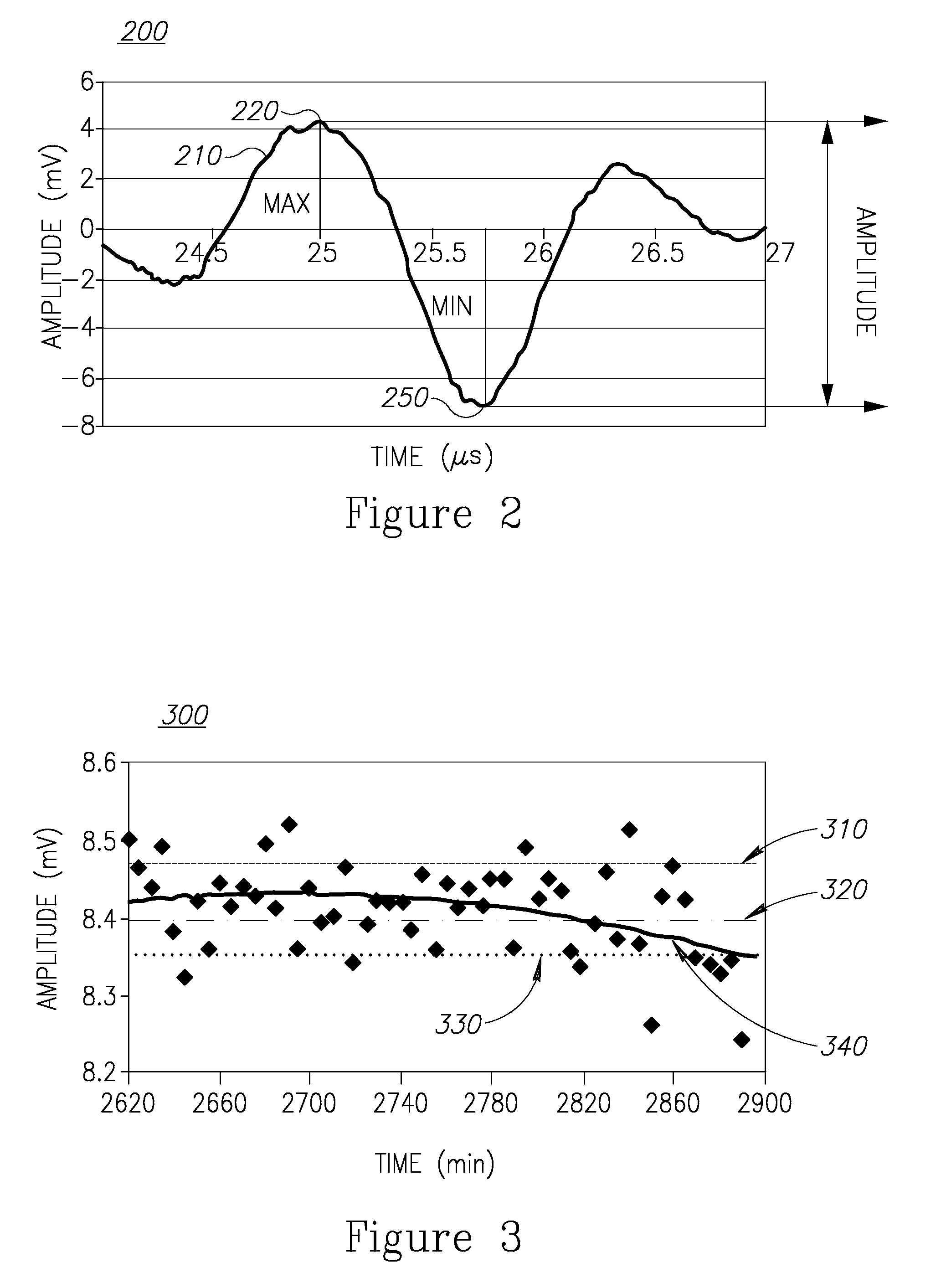Analyzing ultrasonic signals using a dynamic window for an early detection of scaling in water processing equipment
a dynamic window and ultrasonic technology, applied in chemical methods analysis, process and machine control, instruments, etc., can solve the problems of increasing the resources needed to carry out such processes, causing irreversible damage to equipment, and damage to the process, so as to avoid scaling
- Summary
- Abstract
- Description
- Claims
- Application Information
AI Technical Summary
Benefits of technology
Problems solved by technology
Method used
Image
Examples
example 1
[0049]In a specific non-limiting embodiment of the invention the processing of the wave signals was carried out as follows:
[0050]Real-time acoustic spectra were generated by means of 10 MHz planar ultrasonic sensors using an ultrasonic pulser / receiver in conjunction with a digital storage oscilloscope. A custom-made multi-channel scanner was used for acquiring the wave signals reflected in response to the acoustic spectra emitted from the multiple (3) ultrasonic sensors. A custom LabVIEW program along with a 12-bit multifunction I / O analog-to-digital converter was used to obtain a time-domain ultrasonic wave signal (e.g., sampling rate of about 0.5-20×109 points / s, preferably about 5×109 points / s) from each ultrasonic sensor over a time period of 0.2-10 μs every 5 min, preferably 3 μs every 5 min. A representative acoustic time-domain wave signal 210 with its maximum 220 and minimum 250 is shown in FIG. 2. The time-domain signal is plotted as amplitude (mV) versus signal arrival tim...
example 2
[0087]The apparatus is the same in example 1 except the pulser / receiver is a Olympus model 5072pr, the multiplexer used is MUX-8 (Simex Systems Be-Insp), the reflected waveforms are stored by a Tektronix TDS3012C digital oscilloscope from which they are fed to the computer. The A / D interface for weight, temperature, pressures and reflected waveforms is a National Instruments NI-9219 card connected to a PC. The process and waveform input data is analyzed by software written on the LabVIEW platform (version 8.5) which generates the average amplitude, trend line and standard deviation window as described in the patent and in FIG. 4. The LabVIEW written software then sends signals via the USB 6008 D / A card to the valves to effect when the trend line intersects the operation window which is held at + / −1 to 1.2 times the standard deviation of the average amplitude. Intersections in the first 15 minutes of each cycle are ignored since they reflect the noisiness of the initial data.
[0088]Th...
example 3
Successful Detection of Threshold Scaling with Calcium Carbonate
[0090]The same apparatus was used as in example 2. However the feed solution was composed of 7 mM CaCl2 and 7 mM NaHCO3. The feed pH was adjusted by bubbling CO2 into the feed tank and was maintained by a pH controller that determined the frequency of opening and closing a solenoid leading from the CO2 gas cylinder to an injection pipe in the feedline. For this experiment the feed pH was maintained at 6.8. Given the equilibrium constants and calculating the concentration polarization as described in example 1, but allowing for the lower rejection of carbonic acid (73%) as opposed to calcium chloride (100%) and sodium bicarbonate (−98%) based on the hydrodynamic conditions, it was possible to calculate the calcite supersaturation at the membrane wall as a function of downstream distance from the port entrance. Under conditions of 89 L / h recycle rate, pressure of 11 bar and initial flux of ˜65 L / m2-h, this results in an a...
PUM
| Property | Measurement | Unit |
|---|---|---|
| frequencies | aaaaa | aaaaa |
| frequencies | aaaaa | aaaaa |
| acoustic time- | aaaaa | aaaaa |
Abstract
Description
Claims
Application Information
 Login to View More
Login to View More - R&D
- Intellectual Property
- Life Sciences
- Materials
- Tech Scout
- Unparalleled Data Quality
- Higher Quality Content
- 60% Fewer Hallucinations
Browse by: Latest US Patents, China's latest patents, Technical Efficacy Thesaurus, Application Domain, Technology Topic, Popular Technical Reports.
© 2025 PatSnap. All rights reserved.Legal|Privacy policy|Modern Slavery Act Transparency Statement|Sitemap|About US| Contact US: help@patsnap.com



